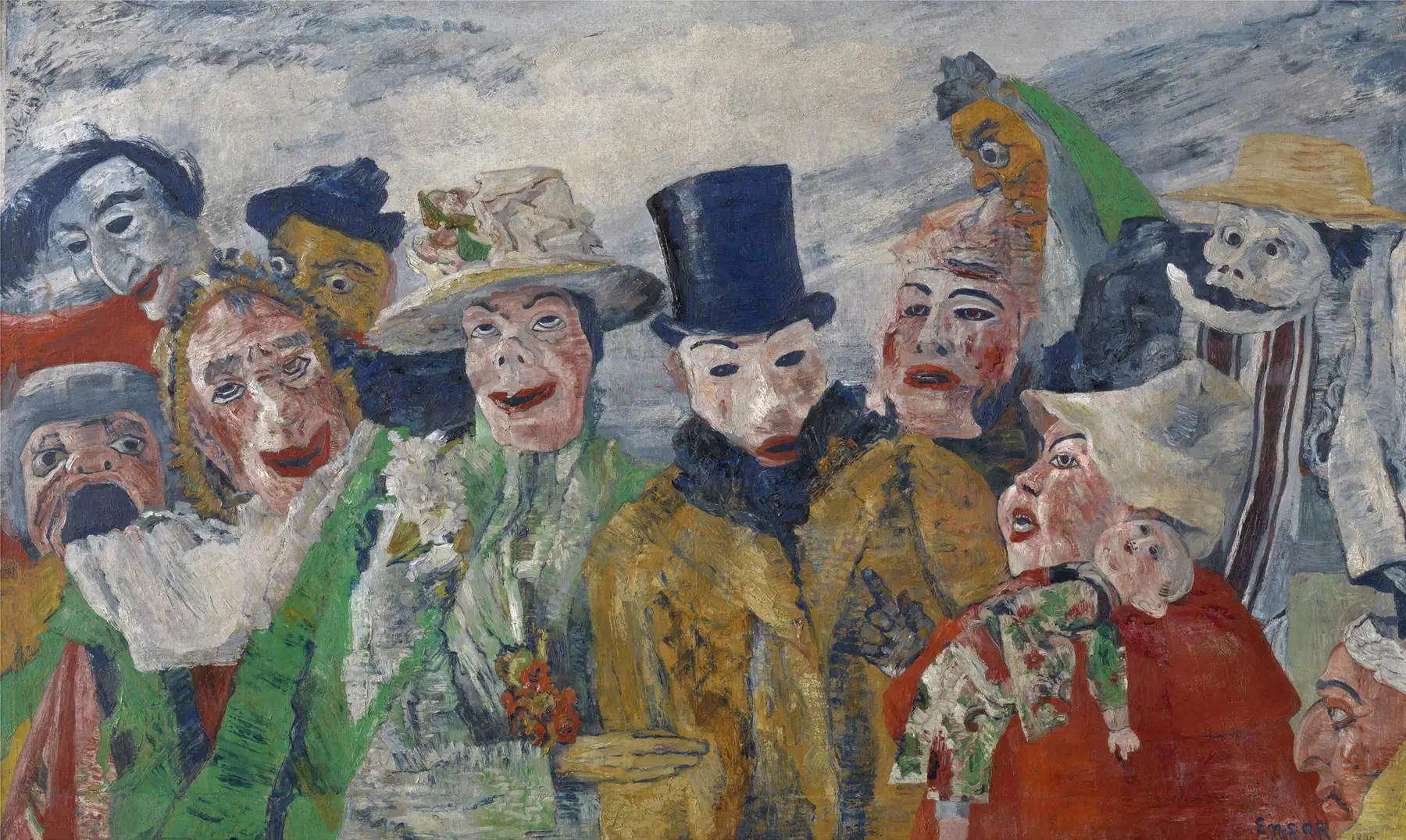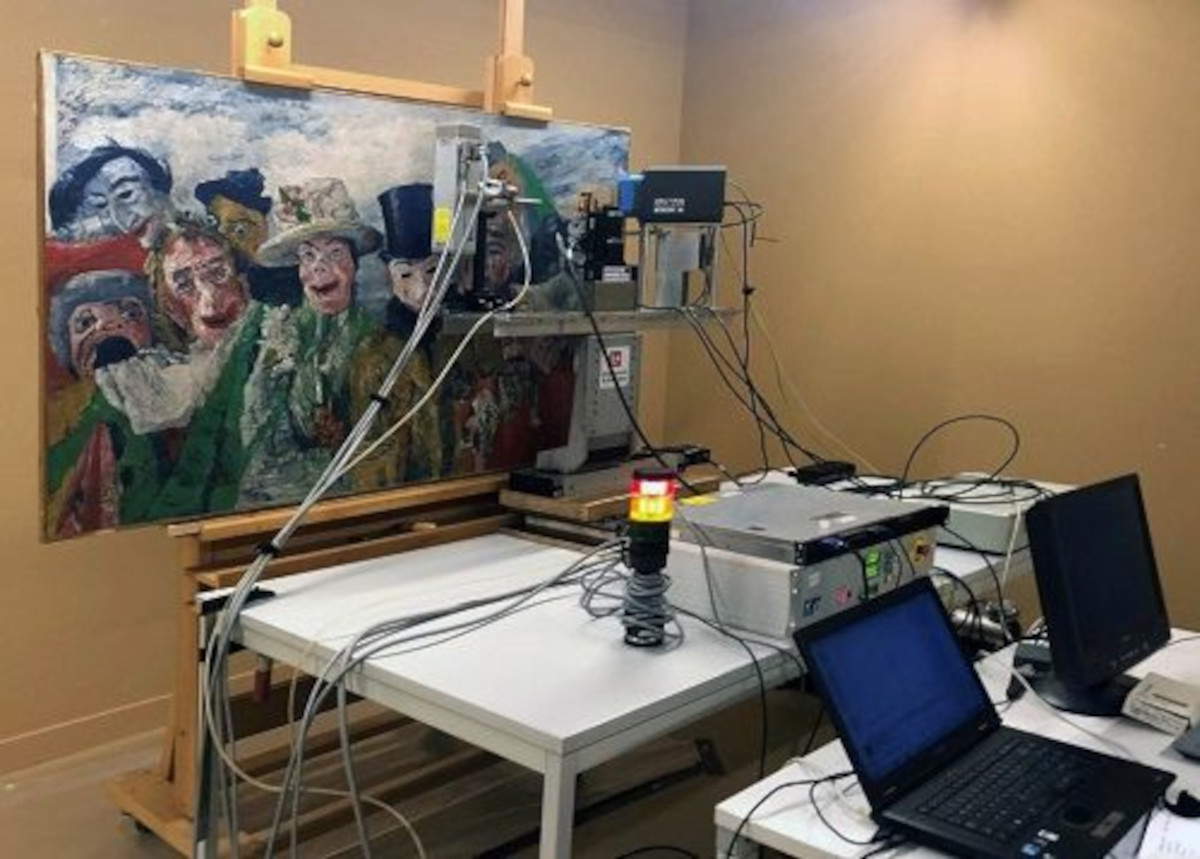An international team of scholars, led by CNR-Scitec and the Department of Chemistry, Biology and Biotechnology at the University of Perugia, together with the European Synchrotron in Grenoble, the Hamburg Synchrotron and the University of Antwerp, conducted a study of James Ensor ’s The Intrigue housed at the Royal Museum of Fine Arts in Antwerp, and analyzed the causes leading to the degradation of the emerald green that dominates the scene, which is particularly sensitive to light. The findings were published in the journal Science Advances.
Indeed, the bright shade of green that characterizes the composition appears vulnerable. The researchers elucidated the chemical processes responsible for altering one of the most widely used pigments between the 19th and 20th centuries by artists such as Van Gogh, Monet and Cézanne. The study made use of portable instrumentation and X-ray techniques that allow early detection of the onset of degradation and follow its evolution. The results open new perspectives for preventive conservation strategies for many famous paintings. Emerald green, based on copper arsenite, was introduced in the 19th century and became famous for its intensity and brightness. However, its instability was already known to artists: Van Gogh himself had observed that the hue tended to lose brilliance over the years. “It was already known that emerald green degrades with time, but our goal was to understand exactly the role of light and moisture in this process,” explains Letizia Monico, a researcher at CNR-Scitec.
“The investigations have identified two distinct mechanisms: moisture promotes the formation of arsenolite, a crystalline compound that makes the paint brittle and prone to flaking, while light causes the oxidation of arsenic on the surface, creating a thin whitish layer that dulls the original color,” adds Aldo Romani, professor at the University of Perugia.

The team coordinated by CNR-Scitec and the University of Perugia, with the collaboration of ESRF, DESY and the University of Antwerp, conducted noninvasive analyses of the work of Ensor, a Belgian painter and printmaker born in Ostend in 1860. Intrigue, created in 1890 in oil on canvas, is among the most enigmatic of his works: against a light-toned background emerge masked figures in vivid colors, among which green stands out.
The investigations were carried out by combining noninvasive portable methodologies with X-ray analysis produced by synchrotron radiation. This work demonstrates how science and technology can support the preservation of artistic heritage. At first, researchers performed large-scale in situ analyses to assess the composition and conservation status of green areas, identifying the best spots to take microsamples. The measurements were carried out with portable instruments from the University of Antwerp, thanks in part to the support of MOLAB (MObile LABoratory), the mobile laboratory coordinated by the Institute of Cultural Heritage Sciences (Ispc) of the CNR and belonging to the European Research Infrastructure for Heritage Science, E-RIHS. “Non-invasive molecular techniques are essential tools: they allow obtaining in-depth information on materials without sampling, target micro-sampling, and allow early interception of possible degradation phenomena,” said Costanza Miliani, MOLAB coordinator and acting director of the Cnr - Ispc.


Next, the selected microsamples were analyzed on a sub-micrometer scale using X-rays from ESRF and DESY laboratories, taking advantage of several complementary techniques. “The analyses performed are essential for this type of study, as they are the only ones that can provide specific stratigraphic information on the nature of the different arsenic compounds at the micrometer scale,” explains Marine Cotte, ESRF scientist. By comparing the results obtained from the painting with those obtained from laboratory-aged artificial emerald green samples, the group determined that light is the main risk factor for The Intrigue and, most likely, for other works made with the same pigment. Today’s advanced technologies, however, make it possible to detect early signs of degradation and monitor its progress.
This information is crucial for developing more targeted conservation strategies. The research, part of the CHANGES (Cultural Heritage Innovation for Next-Gen Sustainable Society, Spoke 5) project funded by the European Union through the NRP-Next Generation EU, aims to improve techniques for monitoring and preventing deterioration, ensuring the preservation of works made with synthetic pigments that originated during the Second Industrial Revolution.
 |
| CNR, study conducted on Ensor's The Intrigue reveals why emerald green tends to deteriorate |
Warning: the translation into English of the original Italian article was created using automatic tools. We undertake to review all articles, but we do not guarantee the total absence of inaccuracies in the translation due to the program. You can find the original by clicking on the ITA button. If you find any mistake,please contact us.